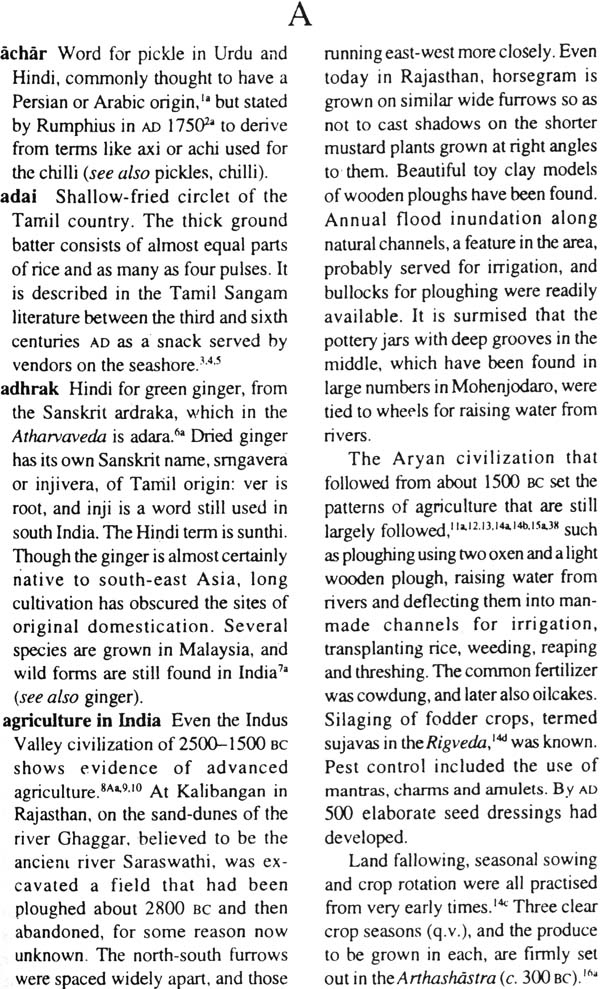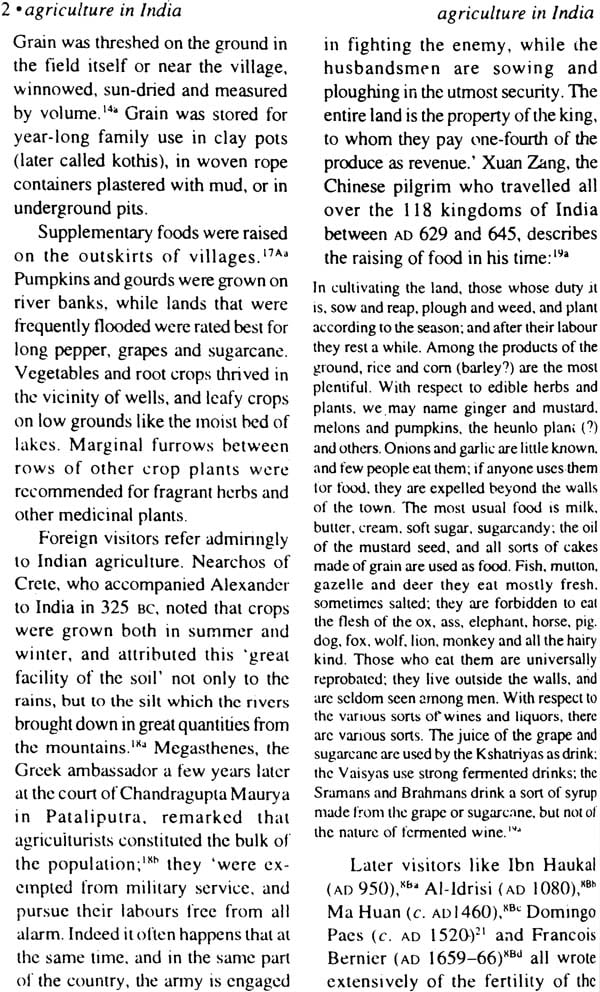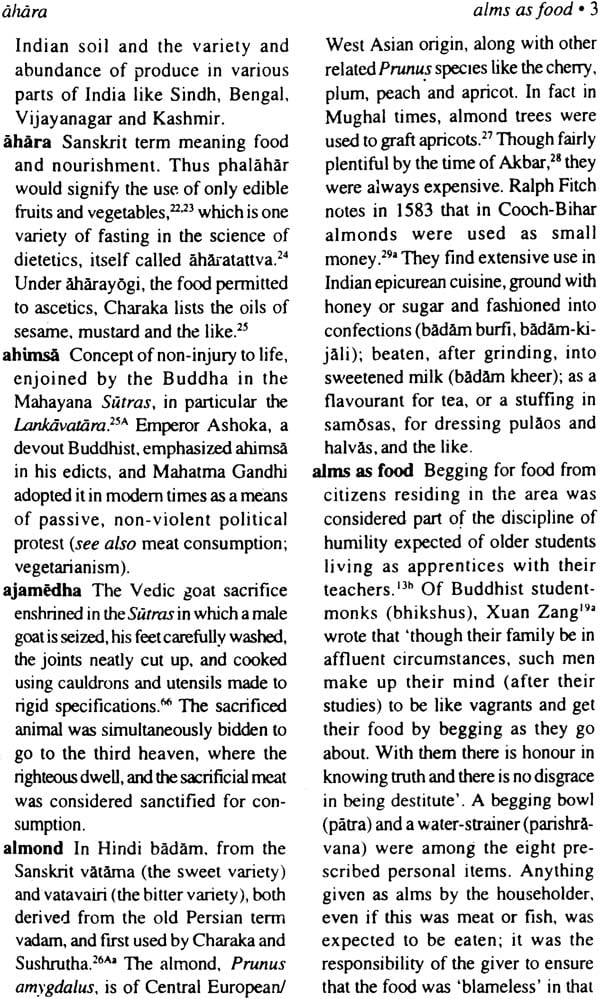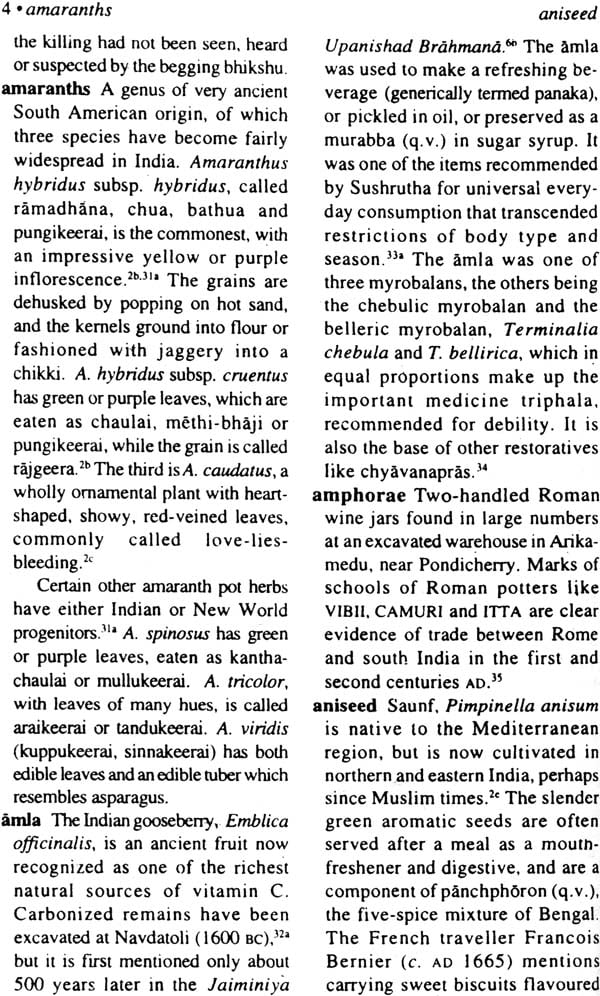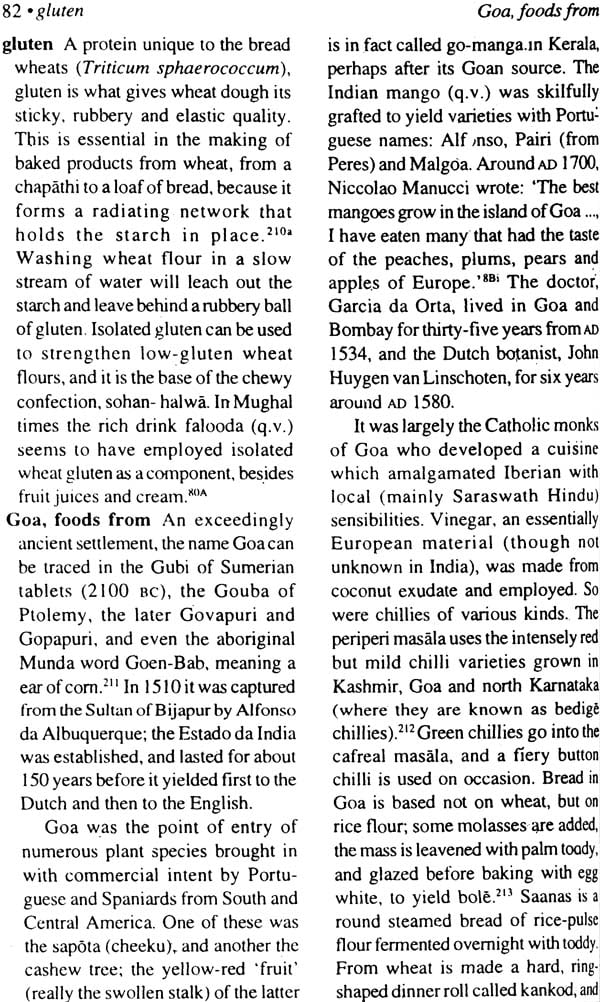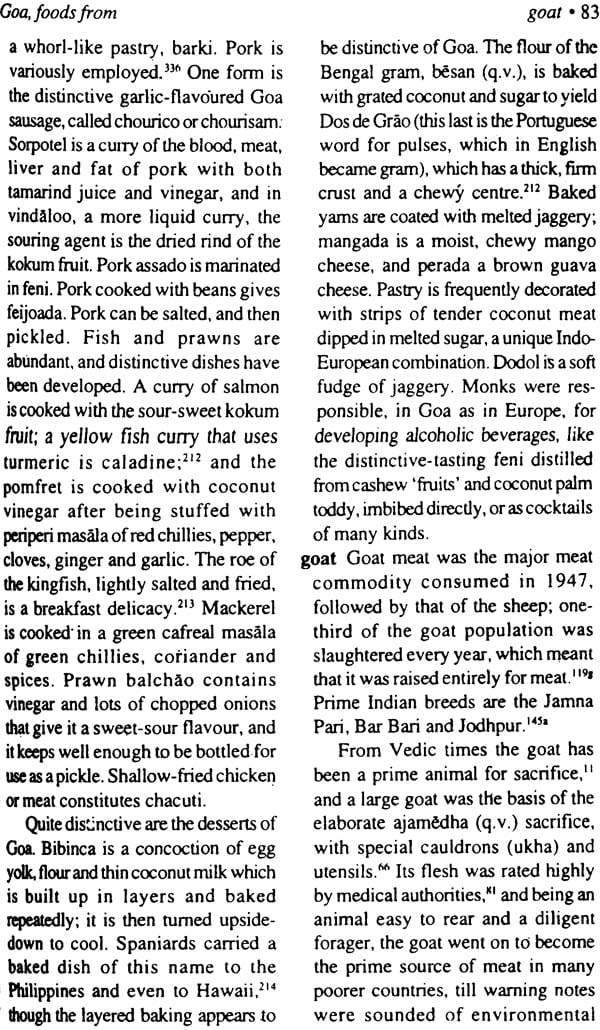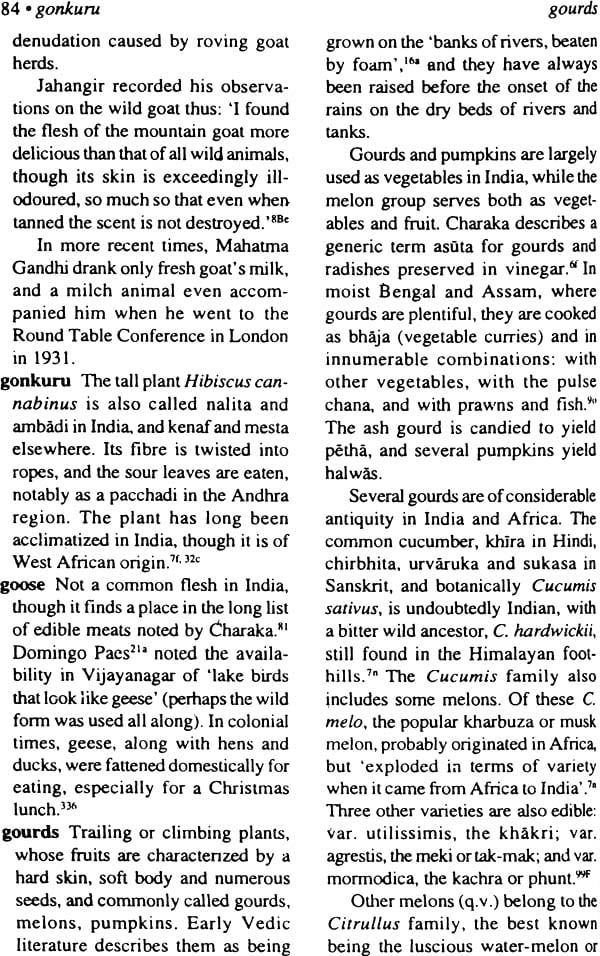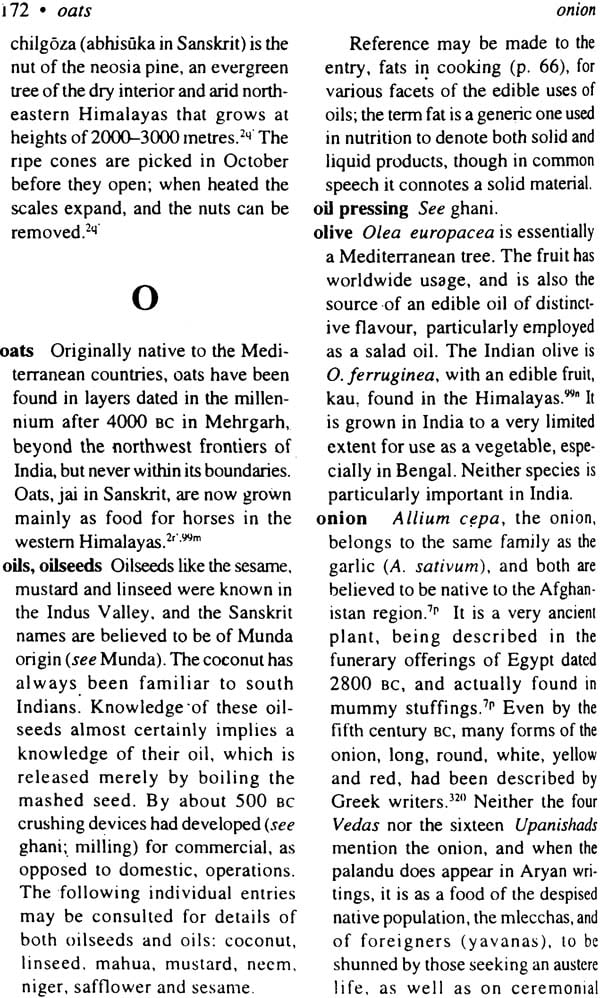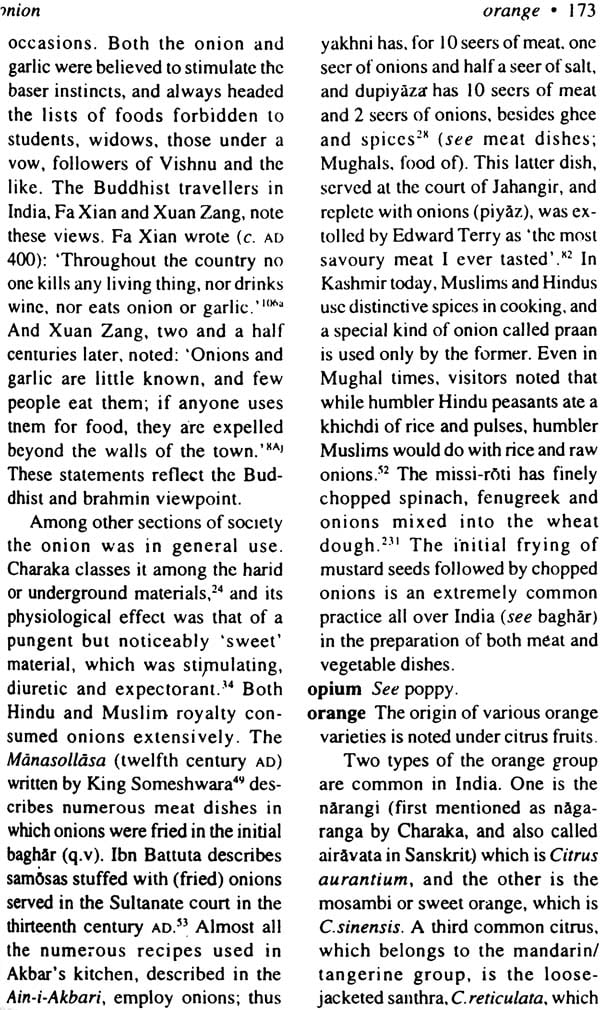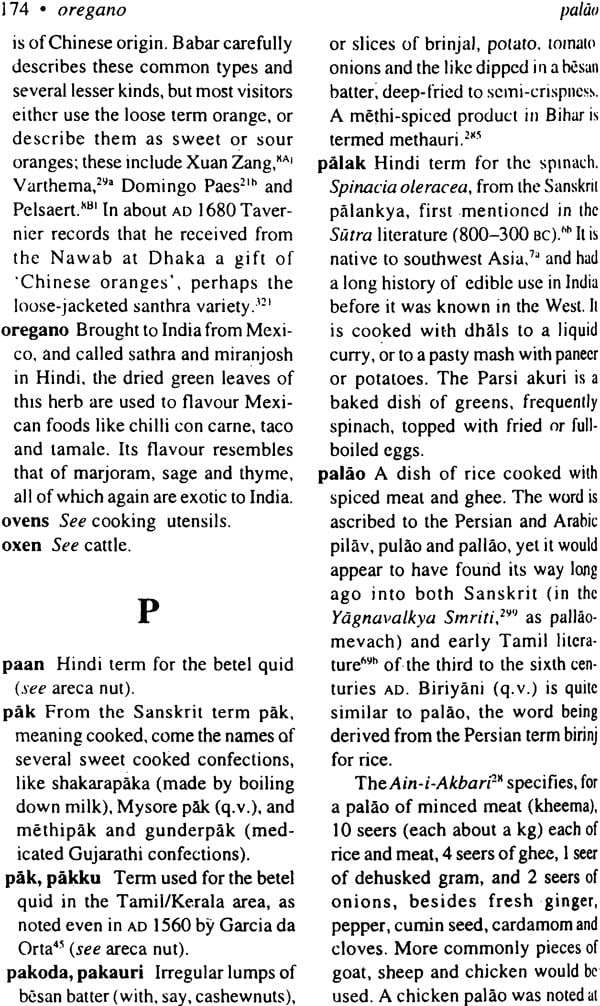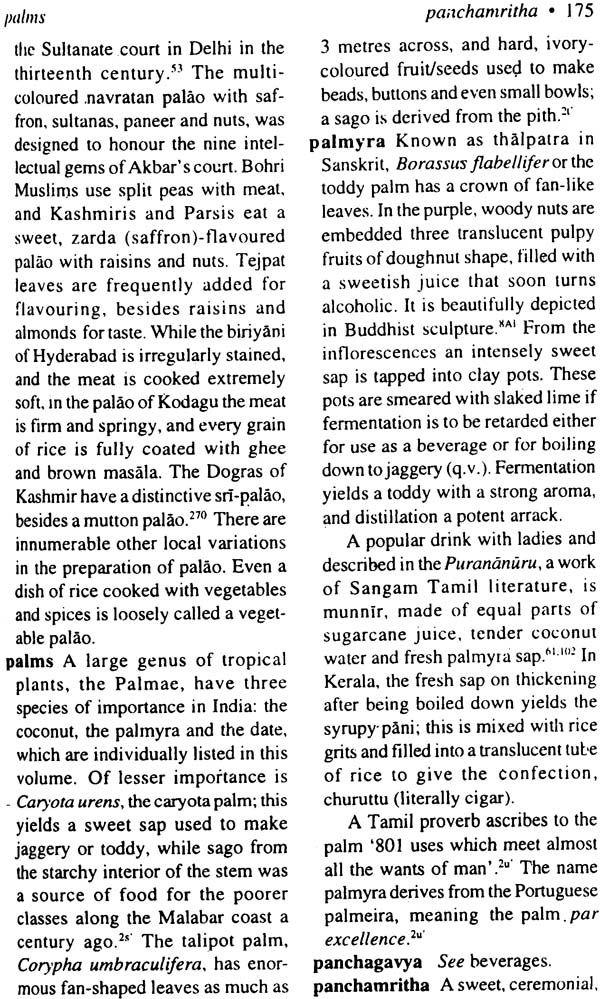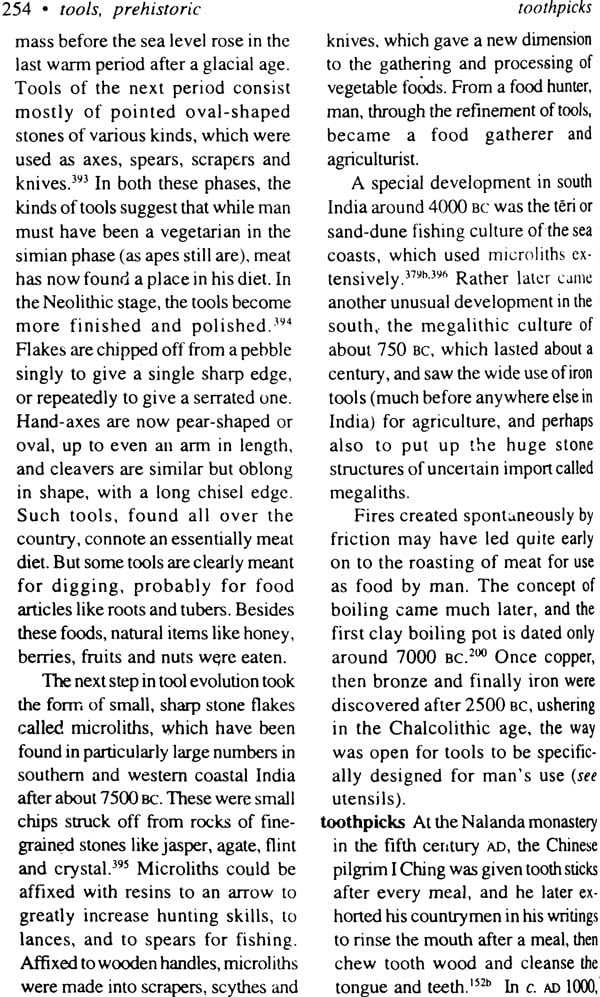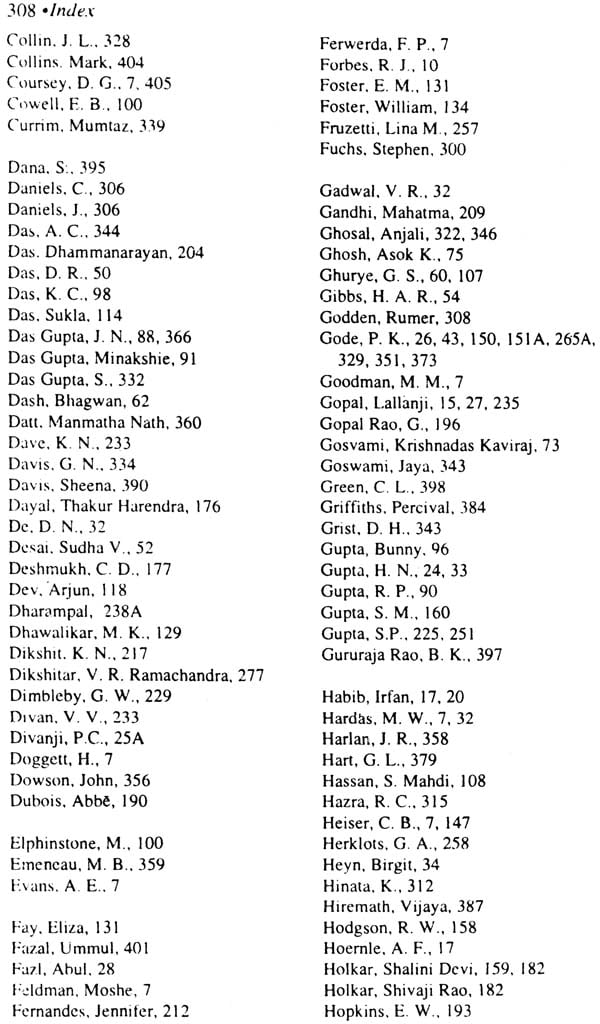
A Historical Dictionary of Indian Food
Book Specification
| Item Code: | NAL620 |
| Author: | K.T. Achaya |
| Publisher: | Oxford University Press, New Delhi |
| Language: | English |
| Edition: | 2022 |
| ISBN: | 9780195658682 |
| Pages: | 363 |
| Cover: | Paperback |
| Other Details | 8.5 inch x 5.5 inch |
| Weight | 360 gm |
Book Description
Do you know about the fascinating journey of various food plants from the New World to India? How food of other countries was integrated into Indian cuisine? How food items etymologically evolved, for example, from the aboriginal Munda tongues into Sanskrit?
Celebrating the culinary rainbow of India, A Historical Dictionary of Indian Food traces the gastronomic history and food ethos of the country. Drawing on archaeology, historical writing, botany, genetics, and ancient literature in sanskrit, Pali, Tamil, and Kannada, this volume provides a wealth of information on food materials, cuisine, and recipes of India. Alphabetically arranged and extensively cross-referenced, this book will delight both foodies and food academics.
K.T. Achaya (1923-2002) was a renowned nutritionist and an authority on Indian food.
Several readers of my earlier book. Indian Food: A Historical Companion published by Oxford University Press in 1994, felt there was need for a historical dictionary that would bring together, in alphabetical order, material scattered all over the earlier volume, besides of course relevant new material. Some cut-off point was necessary, and 1947, the year of Indian Independence, seemed appropriate. In the event, this is only relevant to a few entries, such as wheat milling or sugarcane products, where certain production figures for 1947 were in order. Of course the general thrust of the volume is the progression, over some four thousand years, of food materials themselves, and their conversion to edible products, in the Indian sub-continent.
The choice of entries was not confined to food per se. nor could it be when the basis of Indian dietetics is a holistic one that even embraces a cosmic moral cycle. Ayurveda is the science of life as a whole, and its precepts have for millennia governed, to greater or lesser degrees, the choice and style of food in India. Accordingly, ayurvedic parameters of taste (rasa), aftertaste (vipaka), potency (vlrya) and guna or property (hot-cold, heavy- light, oily-dry and so on), have been noted in the entries for several common food materials. and in turn their effect on the hurnoural balance (dosha) of the body. Hindsight has generally been avoided; thus the amla or Indian gooseberry is now known to have an exceptional content of vitamin C. but traditional medicine had its own reasons for the value of amla in several restorative blends.
Being a historical dictionary, the country's oldest literatures, which are in Sanskrit, Pali, Tamil and Kannada, have naturally, been drawn upon extensively, as have the often illuminating accounts of visitors to India, starting with the Greeks in the fourth century BC, Entries which enumerate these sources, with historical dates, therefore seemed warranted, Another fascinating area, especially in the realm of food, is the transfer of words across languages, from the aboriginal Munda tongues into Sanskrit, from Tamil and Malayalam (often by way of Portuguese or Spanish) into English, and in reverse from these languages into Indian tongues.
Archaeological, literary, historical, botanic and genetic evidence have all been drawn upon to situate Indian foods in time and place. Of particular interest is the recent migration, following Columbus and Vasco da Gama, of food plants from the New World to India through Portuguese and Spanish agency. So quickly did these become integrated that today the potato, tomato, papaya and above all the chilli are all but indispensable to Indian, cuisine. Brief notes on the origins and transfer of these food materials are included in this dictionary. Despite extensive cross-referencing in the text, some repetition could not be avoided if each entry was to be reasonably complete; thus the entry on meat dishes would include preparations from Kashmir, Hyderabad and Kodagu, which would also figure in entries devoted to these cuisines.
In a book dealing with Indian food, it would have been pedantic and tiresome to italicize Indian words, like dhal or roti or ghee. In writing Indian words in English, except for indicating lengthened vowels, diacritical marks have been avoided. Phonetic forms of spelling close to the original sound have been sought, like palao, chana (for the Bengal gram), chhana (for precipitated milk solids), and Sushrutha Samhita (for the medical text). References are listed together at the end of the text, followed by their own author index, and three other textual indexes; of Authors, Literary Works, and Historical Persons; of Indian Words; and of Latin Names.
In the rush into modernization, many traditional food preparations will be lost irretrievably unless documented by those in a position to do so. Women would be at a particular advantage in such efforts.
| Preface | v |
| List of Headwords with Corresponding Page Numbers | ix |
| Text | 1 |
| References | 277 |
| Indexes | |
| Author Index with Reference Numbers | 307 |
| Index of Authors, Literary Works and Historical Persons | 313 |
| Index of Indian Words | 319 |
| Index of Latin Names | 345 |
